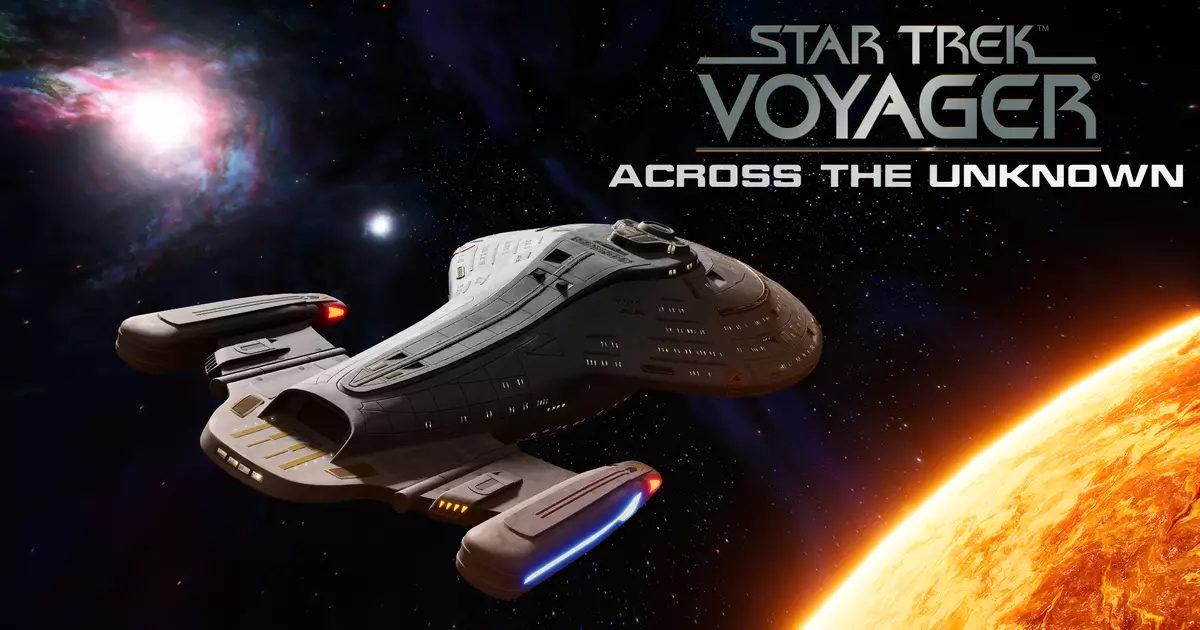The announcement of *Star Trek: Voyager – Across the Unknown* heralds an exciting pivot in how fans and newcomers alike can experience the iconic series. Unlike traditional narrative-focused games, this title thrusts players into a dynamic, survival-based strategy environment that emphasizes agency, decision-making, and exploration. It’s more than a mere adaptation; it’s a bold reimagining of the Voyager saga, offering an interactive playground where familiar characters and fresh scenarios collide. As someone with a deep affection for the series and a penchant for innovative gameplay, I see this game as a chance to step into Janeway’s shoes and craft new stories that challenge the boundaries of canonical storytelling.
What sets this game apart is its willingness to embrace complexity. It encourages players to manage resources, build out the ship’s infrastructure, and navigate the moral ambiguities that defined the series—think of Janeway’s dilemma over the Kazon or Neelix’s negotiations with hostile species. The devs’ choice to combine rogue-lite mechanics with strategic decision-making signals a shift toward depth over formulaic storytelling. It offers the potential for unpredictable encounters and multiple endings, making each playthrough a unique voyage into the unknown. These elements are not just add-ons; they represent a commitment to embedding players within the fabric of Voyager’s universe, fostering a sense of genuine authority and consequence.
Balancing Nostalgia with Fresh Gameplay Innovation
For fans, nostalgia is a powerful motivator, and *Across the Unknown* leans heavily into that emotional pull. The detailed bridge overlay, the dollhouse spaceship cutaway, and familiar crew members evoke cherished memories, while the inclusion of characters like Harry Kim and Seven of Nine anchors the experience in recognizable lore. Yet, amid the fan service, there’s an evident desire to innovate. The game’s strategic layer, which includes researching technologies, engaging in diplomacy, and handling crises, aims to synergize the universe’s rich storytelling with modern gameplay mechanics.
However, the challenge lies in how effectively the game can transcend its roguelike mechanics, which tend to polarize players. While some relish the tension and replayability these systems offer, others might find the randomness frustrating or feel they undermine continuity. Still, the potential for alternative what-if scenarios—such as Janeway becoming the Borg Queen or the Doctor stepping into command—introduces a playful divergence from canon, allowing fans to indulge in speculative storytelling. Such elements could redefine what it means to “live” the Voyager experience, transforming it from a static narrative into an evolving narrative universe that responds to each decision.
Gameplay Dynamics: From Ship Management to Away Missions
The core gameplay promises a layered experience, blending ship management, away missions, and combat. The base-building aspect, reminiscent of *XCOM: Enemy Unknown*, invites strategic planning; players decide which facilities to prioritize, shaping Voyager’s capabilities over time. The idea of customizing the ship’s internal structure echoes the series’ emphasis on adaptability, resourcefulness, and crew welfare. Yet, the execution of spaceship navigation and combat—especially the top-down solar system movement—raises questions. It risks reducing the grandeur of the Delta Quadrant to a simplified, almost monotonous interface that may dampen the immersive feel the series is renowned for.
The away missions, however, are an intriguing feature. Selecting teams of crew members with complementary skills provides a tactical layer that emphasizes risk management and strategic choice. It’s the kind of gameplay that invites experimentation—balancing safety with bravery and scientific curiosity with tactical necessity. These missions could serve as a narrative backbone, driving home the series’ themes of exploration, cooperation, and moral dilemmas. Meanwhile, ship-to-ship combat stages will test players’ ability to coordinate their crews under pressure, adding excitement and urgency to the gameplay loop.
The Future of Voyager Gaming and the Power of a Fan-Driven Revival
While *Across the Unknown* still lacks a confirmed release date, its concept already sparks a sense of anticipation. It captures the essence of what makes Voyager compelling—its resilience, diversity of characters, and unyielding quest to find a way home—while embedding these elements into a modern, strategic format. This approach positions the game not merely as a nostalgic rehash but as a genuine extension of the universe that allows for creative freedom and personalized storylines.
Ultimately, this game reveals a profound truth about the series: Voyager’s strength lies in its potential for reinvention. Fans have long pondered “what if” scenarios, and now they may finally indulge in their fantasies—becoming Janeway, unleashing Seven’s latent capabilities, or even dreaming up new alliances and conflicts within a familiar universe. Although the developers’ experience with space sims is limited—most notably, their work on Asterix adaptations—the ambition to craft a complex, immersive Trek experience suggests a game that could resonate deeply with dedicated fans and newcomers alike. If executed well, *Across the Unknown* might become a landmark game that redefines how we experience the voyages of the starship Voyager—no longer just a vessel in space, but a vessel of endless narrative possibilities.

